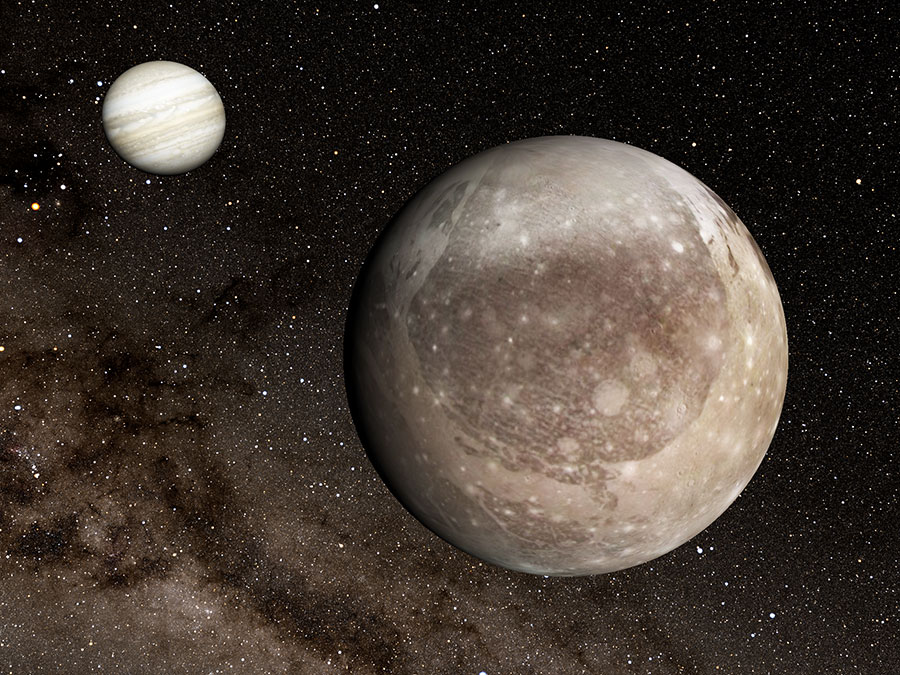National Astronomical Observatory of Japan | Center for Computational Astrophysics | 2020 Aug 13
Researchers from Kobe University and the National Institute of Technology, Oshima College have investigated the orientation and distribution of the ancient tectonic troughs on Jupiter’s moon Ganymede through a detailed reanalysis of image data from probe missions. They discovered that these troughs are distributed concentrically across almost the entire surface of Ganymede, indicating that these troughs may be part of one giant crater covering Ganymede. If so, this is the largest impact structure identified in the Solar System so far.
- Jupiter (background, left) and its moon Ganymede (foreground, right) visualized using the Four-Dimensional Digital Universe viewer “Mitaka.” The furrows found on the older, Dark Terrain, areas of Ganymede’s surface could actually be parts of a single, giant, multiring impact crater. (Credit: Tsunehiko Kato, 4D2U Project, NAOJ)
Many furrows, or trough formations, have been observed on the surface of Ganymede, one of the Jovian moons. This research group comprehensively reanalyzed image data of Ganymede obtained by NASA’s Voyager 1, Voyager 2, and Galileo spacecrafts. The results revealed that almost all of these furrows appear to be arranged in concentric rings centered around a single point, indicating that this global multiring structure may be the remains of a giant crater. The radial extent of the multiring structures measured along Ganymede’s surface is 7800 km. For comparison, the mean circumference of Ganymede is only 16,530 km. If correct, this is the largest crater yet identified in the Solar System. The previous record holder with a 1900 km radius is on Calisto, another Jovian moon.
Based on a computer simulation conducted using “PC Cluster” at the National Astronomical Observatory of Japan (NAOJ), the team speculates that Ganymede’s giant crater could have resulted from the impact of an asteroid with a radius of 150 km traveling 20 km/s. ...
A Global System of Furrows on Ganymede Indicative of Their Creation
in a Single Impact Event ~ Naoyuki Hirata, Ryo Suetsugu, Keiji Ohtsukia
- Icarus 352:113941 (Dec 2020) DOI: 10.1016/j.icarus.2020.113941


